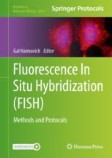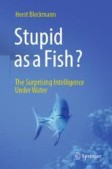Search
Search Results
-
Distinguishing between ante factum and post factum properties of animal cell lines and demonstrating their use in grou** ray-finned fish cell lines into invitromes
In this review, animal cell lines are considered to have two classes of attributes: “before-the-fact” ( ante factum ) and “after-the-fact” ( post factum )...

-
Role and relevance of fish cell lines in advanced in vitro research
IntroductionCell line derived from fish has been established as a promising tool for studying many key issues of aquaculture covering fish growth,...

-
The Epiblast and Pluripotent Stem Cell Lines
All somatic cells develop from the epiblast, which occupies the upper layer of two-layered embryos and in most mammals is formed after the...
-
Combined 3D DNA FISH, Single-Molecule RNA FISH, and Immunofluorescence
Nuclear architecture is a potential regulator of gene expression in eukaryotic cells. Studies connecting nuclear architecture to gene expression are...
-
Feeder cell–dependent primary culture of single blastula–derived embryonic cell lines from marine medaka (Oryzias dancena)
Fish embryonic stem cells (ESCs) are derived from blastomeres that have been cultured from blastula embryos. The most widely used method for...

-
Transfection, cytotoxicity, and cell cycle studies on the two newly developed and characterized humpback grouper (Cromileptes altivelis) fin cell lines
The development and characterization of two novel humpback grouper ( Cromileptes altivelis ) fin cell lines are described in this study. The CA1F3Ex...

-

-
Fish Macrophages
Fish macrophages arise from haematopoietic progenitors in the head kidney and differentiate into tissue macrophage subtypes and/or self-maintaining...
-
Isolation and characterisation of two epithelial-like cell lines from the gills of Chrysophrys auratus (Australasian snapper) and Oncorhynchus tshawytscha (Chinook salmon) and their use in aquatic toxicology
In vitro gill models are becoming increasingly important in aquatic toxicology, yet the fish gill invitrome is underrepresented, encompassing...

-
Generation of chimpanzee induced pluripotent stem cell lines for cross-species comparisons
As humans’ closest living relatives, chimpanzees offer valuable insights into human evolution. However, technical and ethical limitations hinder...

-
Cytotoxicity of the field lampricide 3-trifluoromethyl-4-nitrophenol (TFM) in tadpole cell lines from North American frogs
The common field lampricide, 3-trifluoromethyl-4-nitrophenol (TFM), is used to treat streams and creeks infested with highly invasive and destructive...
-
Development of three-dimensional (3D) spheroid culture system from rainbow trout kidney cell line (RTK) for in vitro production of fish viral pathogen
The present study aimed to generate 3D spheroid cultures from three rainbow trout (RTE, RTK and RTS) cell lines by simple and reproducible methods...

-
Aqp4a and Trpv4 mediate regulatory cell volume increase for swimming maintenance of marine fish spermatozoa
Volume regulation is essential for cell homeostasis and physiological function. Amongst the sensory molecules that have been associated with volume...

-
A database of crop pest cell lines
We have developed an online database describing the known cell lines from Coleoptera, Diptera, Hemiptera, Hymenoptera, and Lepidoptera that were...
-
In Vitro Assay for Determining Cyanotoxin Using Cell Line Method: Hepatotoxicity (Cell Lines—HepG2, Caco-2, and V79)
Harmful cyanobacterial blooms are increasing and becoming a worldwide concern as many bloom-forming cyanobacterial species can produce toxic...
-
Establishment and characterization of two novel patient-derived myxoid liposarcoma cell lines
Myxoid liposarcoma (MLPS) is a lipogenic sarcoma, characterized by myxoid appearance histology and the presence of the FUS-DDIT3 fusion gene. MLPS...

-
The Sensory World of Fish
In school, you probably learned that humans have five senses. These are the sense of sight, hearing, smell, taste, and touch. There are also a...
-
Transgenic Fish Production
An organism that has a foreign or modified gene in its genome is called transgenic or GMO. A genetically modified organism (GMO) is an organism whose...
-
In vitro effects of a natural marine algae polysaccharide (λ-carrageenan) on seabream erythrocytes, tumour cell lines and marine bacterial pathogens
Carrageenan is a high molecular weight sulphated polysaccharide used to induce experimental inflammation in mammals. In addition, it possesses a wide...

-
Genomic reconsideration of fish non-monophyly: why cannot we simply call them all ‘fish’?
Extant ‘fishes’ belong to jawless, cartilaginous, actinopterygian, or sarcopterygian fish lineages. They comprise a non-monophyletic group of...

